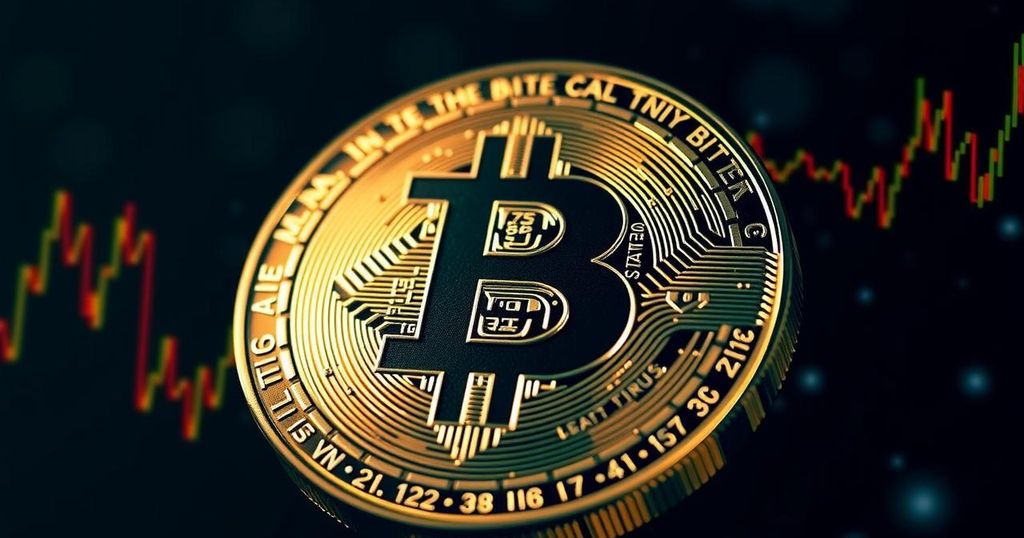Bitcoin’s Record Open Interest Amid Price Surge to $71,000: An Analytical Overview
Bitcoin recently reached a price of $71,000, coinciding with significant growth in open interest in the futures market. This growth indicates healthy capital inflows, driven by factors such as increased CME futures contracts, rising funding rates, and notable inflows from spot Bitcoin ETFs, suggesting a bullish market sentiment.
Recent data indicates that Bitcoin (BTC) has achieved a milestone price of $71,000, coinciding with an unprecedented rise in open interest within the futures market. Open interest signifies the aggregate number of outstanding contracts in the futures market that have not yet been settled. A surge in open interest, particularly alongside increasing prices, typically signals that new capital is flowing into the market, thereby reinforcing a bullish trend for Bitcoin. According to reports, the record open interest in Bitcoin futures is driven by several factors, including a notable increase in futures contracts on the Chicago Mercantile Exchange (CME), rising funding rates in perpetual markets, and heightened capital inflows from spot Exchange-Traded Funds (ETFs) in the United States. The CME has seen a remarkable uplift in Bitcoin futures contracts, registering a 9% increase in open interest over the past 24 hours, culminating in a total of 171,700 BTC, valued at more than $12.22 billion. This positions the CME at a 30% market share of the overall open interest for Bitcoin futures. Additionally, the funding rates within perpetual futures markets have surged to as high as 15% recently, indicating a substantial demand for long positions among traders. Higher funding rates are generally associated with a bullish sentiment, although they also create the potential for increased volatility through forced liquidations during adverse conditions. Fulfilling another crucial role, the escalating interest in spot Bitcoin ETFs—especially since mid-October—has shifted from cash-and-carry arbitrage strategies towards more assertive bullish positioning. This trend signals a growing institutional interest in Bitcoin. Experts, such as Checkmate, highlight a disparity between inflows into ETFs and the rate of open interest growth at the CME. The assessment suggests that investors are decidedly favoring long strategies over neutral positions, reinforcing the bullish atmosphere surrounding Bitcoin. However, contrasting perspectives exist, such as that of Andre Dragosch from Bitwise, who posits that the increase in CME open interest could signify a shift back to cash-and-carry arbitrage approaches. In conclusion, as Bitcoin approaches new price highs, the simultaneous growth in open interest in its futures market underscores strong institutional investment trends and fluctuations that could affect future market behavior. As the market evolves, it will be essential to monitor these trends closely, given their implications for both short-term stabilization and long-term price potential for Bitcoin. The various factors contributing to this phenomenon suggest that while optimism reigns among many investors, caution is equally warranted amidst potential transitions in strategies employed by institutional players.
The Bitcoin derivatives market has gained significant traction recently, with open interest in the futures market hitting all-time highs. Open interest serves as an essential indicator of market health, reflecting the total number of outstanding contracts that indicate traders’ confidence and market activity levels. Understanding how various factors influence these metrics offers critical insights into Bitcoin’s price movements and overall market sentiment. Elements such as trading volumes, institutional participation, and evolving financial products like ETFs increasingly shape market dynamics, guiding investors’ strategies and expectations in an evolving regulatory landscape.
The surge in Bitcoin’s open interest reflects a rich convergence of factors, primarily driven by increased capital inflows from Bitcoin ETFs, rising funding rates in perpetual futures markets, and robust activity on the CME. While the overall outlook appears bullish, differing opinions suggest a mixture of strategies being employed by institutional investors, underscoring the complex nature of contemporary cryptocurrency trading. Monitoring these developments is crucial for anticipating potential market shifts.
Original Source: en.cryptonomist.ch








Post Comment